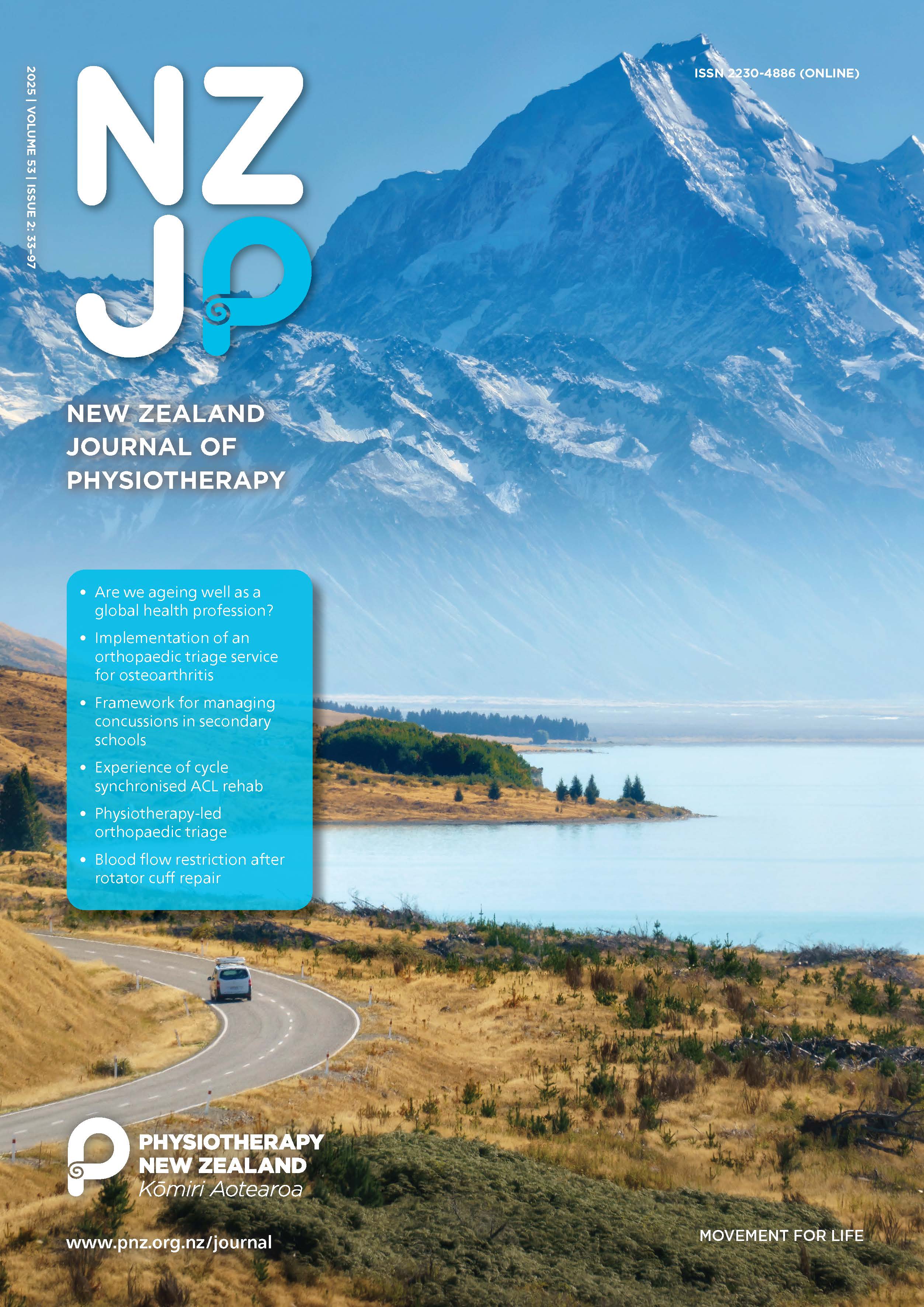Implementation of an orthopaedic triage service for osteoarthritis in the New Zealand public health system: Patient, physiotherapist, manager, and general practitioner perspectives
DOI:
https://doi.org/10.15619/nzjp.v53i2.411Keywords:
Hip, Knee, Orthopaedic, Osteoarthritis, TriageAbstract
To manage the increasing demand on orthopaedic services, health systems around the world have introduced osteoarthritis (OA) models of care led by specially trained physiotherapists. The community orthopaedic triage service (COTS) at the Bay of Plenty district health board (BOPDHB) was piloted to improve the patient journey through the health system. An outcome evaluation was undertaken to explore perspectives of patients, DHB physiotherapists, managers, and general practitioners (GPs) post implementation. Semi-structured interviews were conducted and data were analysed using thematic analysis. Analysis resulted in one overarching central organising concept: Changing the narrative about OA care delivery in the New Zealand public health system. This gave rise to three key themes: (1) Making OA a national health priority, (2) Optimisation of public health resources, and (3) Embedding best practice. Participants reported benefits including improved experience, easier access, and reduced hospital pressures. The COTS has the potential to bridge the gap between primary and secondary care; however, attention must be taken not to utilise a triage model as another barrier to accessing services.


